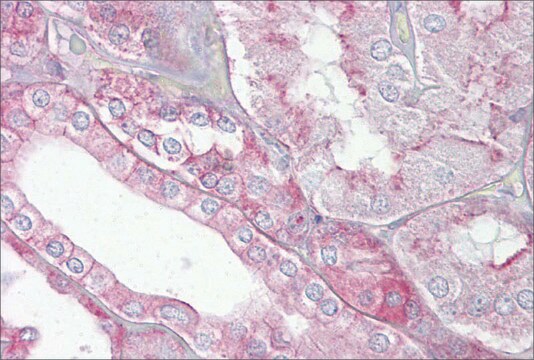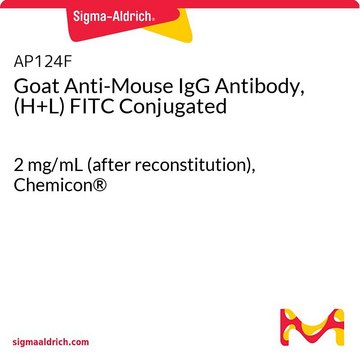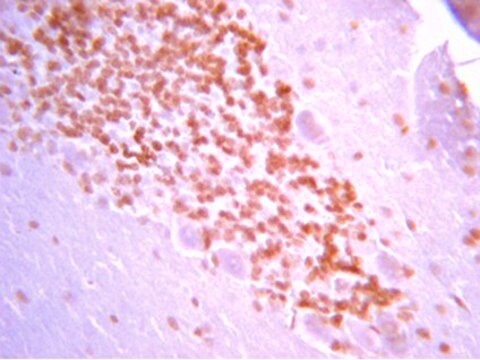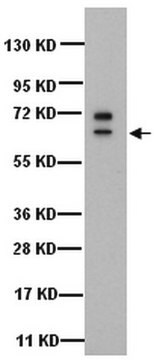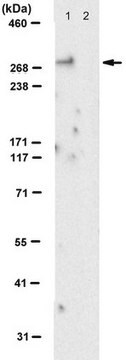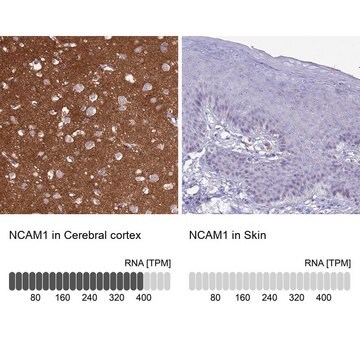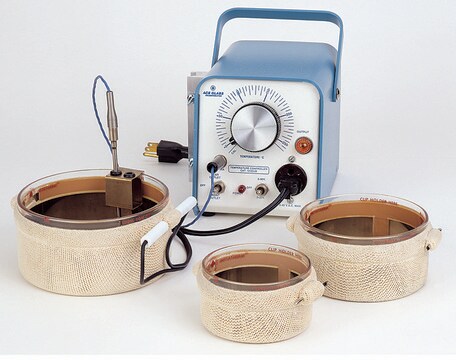ABN2264
Anti-SNTF (cleaved spectrin)
serum, from rabbit
Sinónimos:
Spectrin alpha chain non-erythrocytic 1, Alpha-II spectrin, Fodrin alpha chain, Spectrin non-erythroid alpha subunit, Calpain-derived alpha-II spectrin N-terminal fragment
About This Item
Productos recomendados
biological source
rabbit
antibody form
serum
antibody product type
primary antibodies
clone
polyclonal
species reactivity
human, mouse, porcine
species reactivity (predicted by homology)
bovine (based on 100% sequence homology), rat (based on 100% sequence homology)
technique(s)
ELISA: suitable
immunohistochemistry: suitable
western blot: suitable
isotype
IgG
NCBI accession no.
UniProt accession no.
target post-translational modification
proteolytically cleaved (Tyr1176-Gly1177)
Gene Information
human ... SPTAN1(6709)
General description
Specificity
Immunogen
Application
Western Blotting Analysis: A representative lot detected SNTF (cleaved spectrin) in Western Blotting applications (Roberts-Lewis, J.M., et. al. (1994). J Neurosci. 14(6):3934-44).
Enzyme Immunoassay Analysis (ELISA): A representative lot detected SNTF (cleaved spectrin) in detection antibody for human serum samples (Siman, R., et. al. (2013). Front Neurol. 4:190).
Neuroscience
Quality
Western Blotting Analysis: A 1:10,000 dilution of this antibody detected Spectrin alpha chain, non-erythrocytic 1 in Mouse Brain extract incubated with calcium chloride to activate Calpain.
Target description
Physical form
Storage and Stability
Other Notes
Disclaimer
¿No encuentra el producto adecuado?
Pruebe nuestro Herramienta de selección de productos.
Certificados de análisis (COA)
Busque Certificados de análisis (COA) introduciendo el número de lote del producto. Los números de lote se encuentran en la etiqueta del producto después de las palabras «Lot» o «Batch»
¿Ya tiene este producto?
Encuentre la documentación para los productos que ha comprado recientemente en la Biblioteca de documentos.
Nuestro equipo de científicos tiene experiencia en todas las áreas de investigación: Ciencias de la vida, Ciencia de los materiales, Síntesis química, Cromatografía, Analítica y muchas otras.
Póngase en contacto con el Servicio técnico
